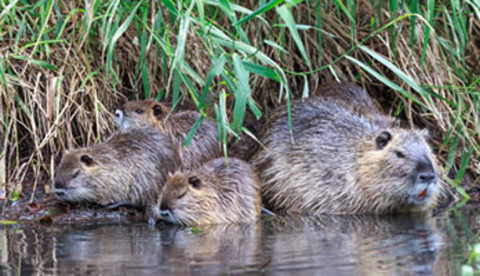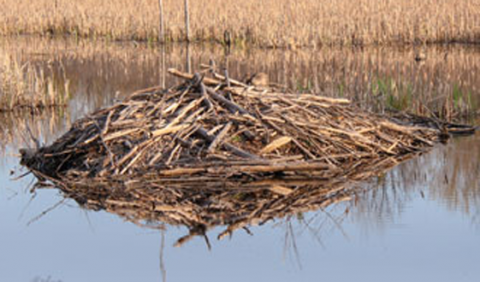Beaver
Beavers
Beaver Information:
Click on the following links to learn more:
Historically, the beaver (Castor canadensis) was North America's most important fur resource. During the 1800s, the unrelenting pursuit and uncontrolled harvest of beavers for their pelts led to extermination throughout much of the animal's range. However, in the early 1900s the beaver received protection. Because of this protection and resulting restoration efforts, including transplanting beaver and changing land management practices, the beaver made a remarkable comeback. Beaver numbers today are at, or exceed, their population levels before the arrival of white settlers in North America.
Beavers sometimes cause problems or become a nuisance when their feeding and dam-building activities conflict with man. This publication provides information on the identification, biology and natural history of beavers and how their feeding and dam-building activities can be prevented or controlled.
Beaver Facts and Biology
The beaver is one of a few mammals, other than man, capable of modifying its habitat to suit its needs. When beavers move into an area, they quickly begin building dams to modify the habitat more to their liking. Once the dam has been built from surrounding timber, the subsequent flooding causes growing timber to die, and other aquatic vegetation begins growing. Often, the new plants growing around the edge of the pond (willows, sweetgum and blackgum) are preferred beaver foods. Thus, good beaver habitat can be almost anywhere there is a year-round source of water. Appropriate habitat can include streams, rivers, ponds, lakes, large reservoirs, swamps, wetlands and drainage ditches.
Home to a beaver is its lodge or bank den, depending on the situation. Lodges are dome-shaped structures built of sticks and mud with a large interior chamber above the water line. Lodges vary in size from 6 to 40 feet, depending on the number of beavers in the colony. Beavers sometimes dig burrows into the banks of ponds, rivers and drainage ditches instead of building a lodge. All lodge and bank den entrances, normally two or more, are located underwater.
Beavers live in family units called colonies, which range in size from two to eight beavers (the average colony size is five to six). A colony consists of the adult pair, the current year's offspring (kits), the previous year's offspring (yearlings) and occasionally a 2 1/2 year old offspring. Beavers are highly territorial animals, and they actively defend the colony's territory against outsiders by using scent marking. When beavers become sexually mature around age two, they leave their home colony to form a colony of their own. Individual movements vary greatly.
The female parent in the colony is relatively sedentary, occupied with caring for young during the spring and summer. Two-year-old beavers may travel five to six miles in search of appropriate habitat conditions necessary for establishing a new territory.
Beavers feed on the cambium layer (just under the bark) of woody plants and a variety of aquatic and upland vegetation.
Beaver lodge
Preferred woody foods include willow, birch, maple, alder, cherry and poplar, although they can and will feed on the leaves, twigs and bark of most species of woody plants. During the summer beavers will also eat water lilies, pond weeds and cattails.
Sometimes beavers will travel substantial distances from the pond or stream to get to corn or soybean fields, where they cut the plant off at ground level and drag it back to the water. What they do not eat, they use for construction material in dams and lodges.

Beaver and Young
Beavers live in family units called colonies, which range in size from two to eight beavers.

Beaver Lodge
A dome-shaped structure made of sticks/mud with a large interior chamber above the water line.
